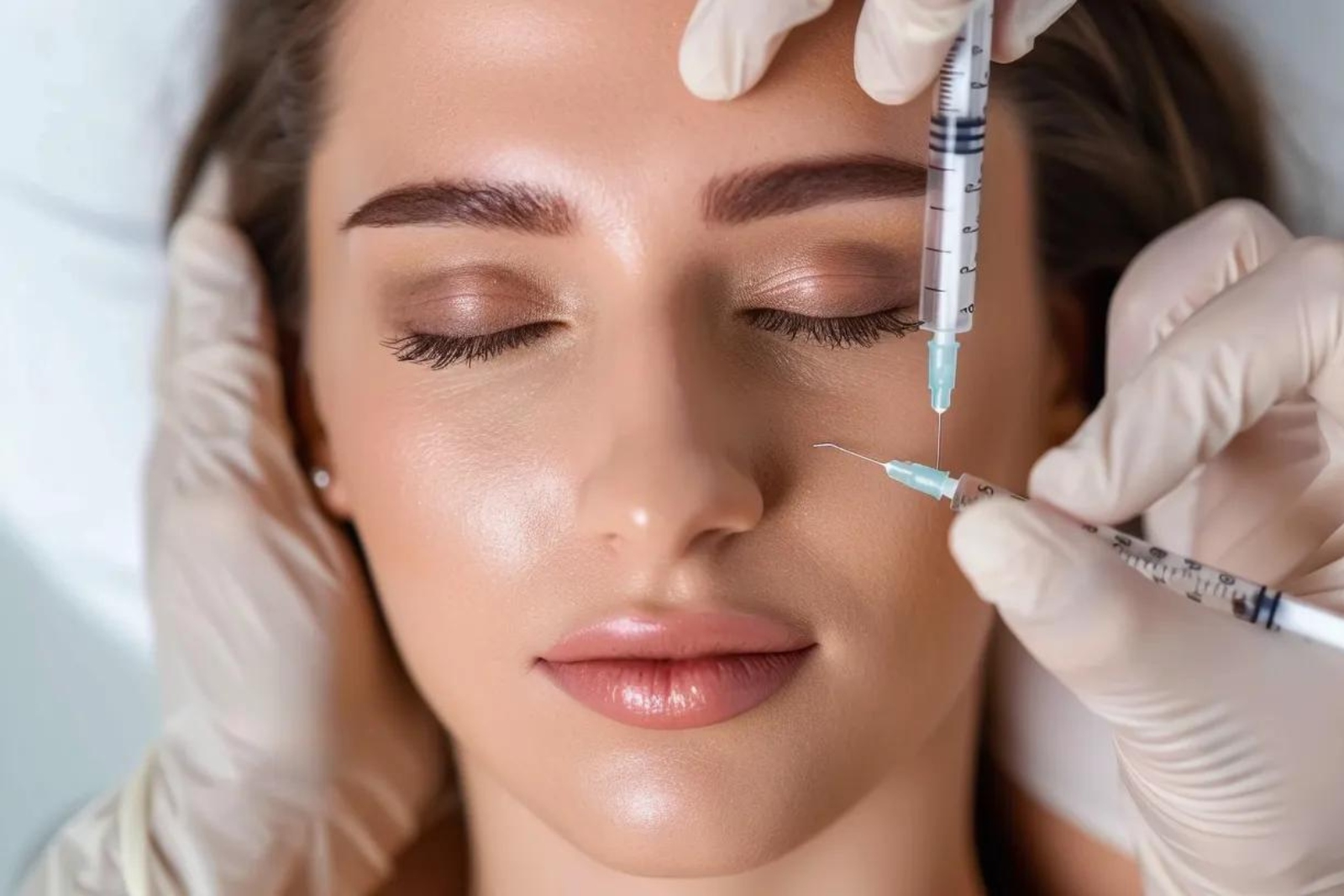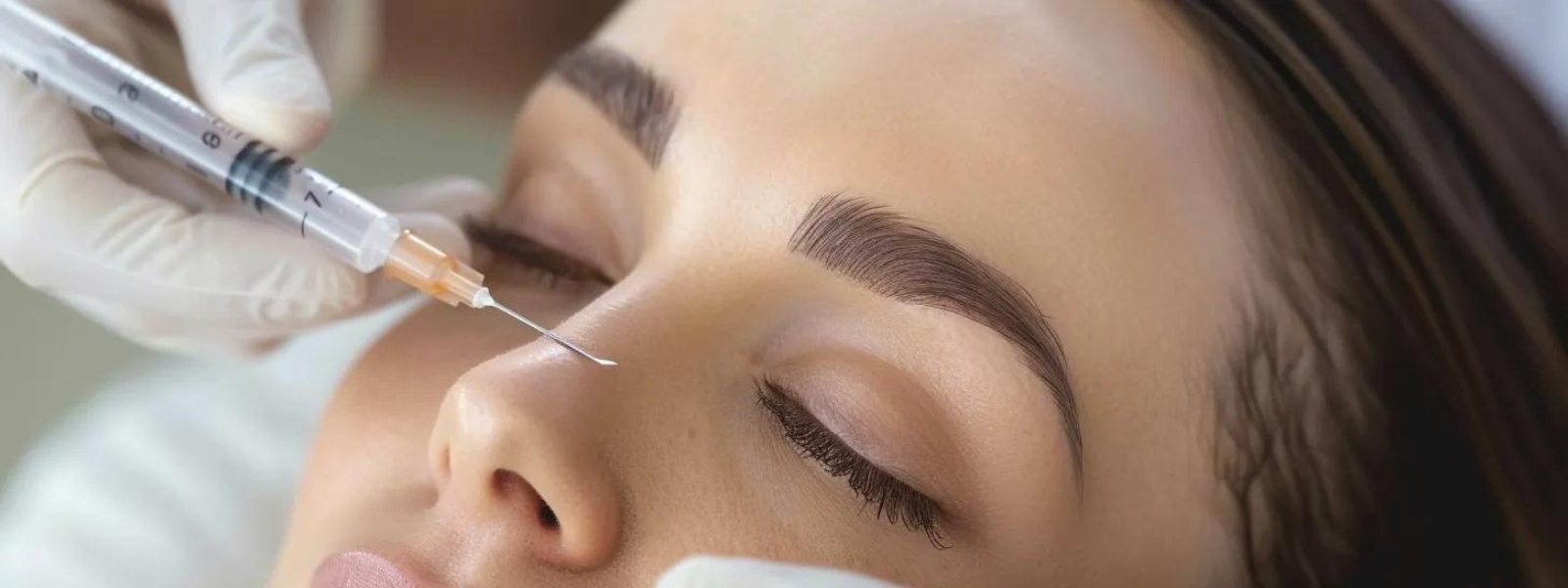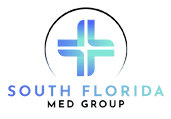
Before Getting Botox, you should avoid alcohol, blood-thinning medications, and supplements like aspirin, ibuprofen, fish oil, or vitamin E for about a week since they increase bruising risk. Skip intense exercise, tanning, or facials right before treatment. Always follow your provider’s prep instructions to ensure safe results and faster recovery.
What Medications Should You Stop Before Botox?
Stop blood-thinning medications 7-10 days before Botox treatment. Blood thinners increase bruising risk and bleeding at injection sites.
Medications to avoid include:
- Aspirin and aspirin-containing drugs
- Ibuprofen like Advil and Motrin, and naproxen such as Aleve
These nonsteroidal anti-inflammatory drugs interfere with blood clotting mechanisms.
Prescription blood thinners like warfarin require doctor approval before stopping. Never discontinue prescribed medications without medical clearance. Some patients take these medications for serious heart conditions or stroke prevention.
Which Supplements Increase Bruising Risk?
Natural supplements can thin blood and increase bruising. Stop these supplements 10 days before treatment. Fish oil and Omega-3 supplements affect platelet function. Vitamin E capsules also interfere with blood clotting processes.
Garlic supplements and ginkgo biloba extract have blood-thinning properties. St. John's Wort can increase photosensitivity and skin reactions. Green tea extract contains compounds that affect coagulation.
Tylenol remains safe for pain relief before Botox. Acetaminophen does not thin blood like other pain medications. This makes it the preferred choice for managing discomfort during preparation.
What About Prescription Blood Thinners?
Patients taking warfarin or newer anticoagulants face complex decisions. These medications prevent serious blood clots and strokes. Stopping them requires careful medical supervision.
Your prescribing physician must evaluate your stroke risk versus bruising concerns. Some patients can safely pause these medications for short periods. Others cannot stop without risking life-threatening complications.
Schedule consultations with both your primary care doctor and injector. This coordination prevents medication errors and safety issues.
What Skincare Products Should You Avoid?
Stop retinoids and anti-aging products 2-3 days before Botox. These products make skin sensitive and increase infection risk.
Avoid retinol and tretinoin products like Retin-A. Glycolic acid and alpha hydroxy acids also create skin sensitivity. Beta hydroxy acids such as salicylic acid can cause irritation.
These products break down skin barriers. Damaged skin increases bruising and infection chances after injections. The compromised skin barrier allows bacteria to enter injection sites more easily.
How Do Skincare Acids Affect Botox Treatment?
Chemical exfoliants remove the top skin layers. This process creates microscopic wounds in the skin surface. Fresh wounds heal poorly and scar more easily.
Glycolic acid penetrates deeply into skin tissues. Alpha hydroxy acids cause controlled skin damage for anti-aging benefits. This damage becomes problematic during injection procedures.
Wait at least 72 hours after stopping these products before treatment. Some sensitive skin types need longer recovery periods. Your injector can assess skin readiness during consultation.
What About Professional Skincare Treatments?
Avoid facial treatments for one week before Botox. Chemical peels create significant skin sensitivity. Microdermabrasion removes protective skin layers.
Laser treatments cause inflammation and skin damage. IPL photofacials increase photosensitivity reactions. These treatments require healing time before injection procedures.
Professional extractions create small wounds in skin tissue. These wounds can become infected during injection procedures. Schedule skincare treatments at least 10 days after Botox instead.
Should You Drink Alcohol Before Botox?

Avoid alcohol 24-48 hours before Botox treatment. Alcohol thins blood and increases inflammation, leading to more bruising and swelling.
Ethanol affects platelet function and blood vessel integrity. Red wine contains additional compounds that worsen bruising. Beer and spirits also interfere with healing processes.
Alcohol dehydrates skin tissues and impairs immune function. Dehydrated skin bruises more easily and heals more slowly. Poor immune function increases infection risks.
Does Caffeine Affect Botox Results?
Limit caffeine intake 24 hours before treatment. Caffeine raises blood pressure and can increase bruising during injections.
High blood pressure makes blood vessels more fragile. Fragile vessels break more easily during needle insertion. Coffee, energy drinks, and caffeinated sodas all raise blood pressure temporarily.
Caffeine stays in your system for 6-8 hours after consumption. Plan your last caffeinated beverage accordingly. Some sensitive patients need longer caffeine-free periods.
How Does Hydration Affect Treatment Outcomes?
Proper hydration improves treatment outcomes and reduces side effects. Well-hydrated skin appears plumper and healthier. Hydrated tissues heal faster after injection procedures.
Drink water consistently for 48 hours before treatment. Avoid excessive water intake on treatment day to prevent bathroom interruptions. Moderate, steady hydration works best.
Dehydrated patients experience more discomfort during injections. Their skin appears tight and less flexible. This makes accurate injection placement more difficult.
What Hair Removal Methods Should You Avoid?
Stop all hair removal near treatment areas 2-3 days before Botox. Hair removal methods irritate skin and increase sensitivity.
Avoid waxing and tweezing procedures that pull hair from follicles. Bleaching products contain harsh chemicals that sensitize skin. Depilatory creams dissolve hair proteins and can cause chemical burns.
Laser hair removal creates inflammation in hair follicles. Threading procedures can introduce bacteria into small wounds. Even shaving can create microscopic cuts in skin surface.
Why Do Hair Removal Methods Cause Problems?
Hair removal creates microscopic trauma in skin tissues. This trauma increases infection risks during injection procedures. Inflamed skin also bruises more easily.
Waxing removes dead skin cells along with unwanted hair. This process creates small wounds that need healing time. Fresh wounds become entry points for bacteria.
Chemical hair removal products alter skin pH levels. Altered pH affects natural skin barrier function. Compromised barriers allow infection-causing organisms to enter tissues.
For patients considering comprehensive wellness care, primary care services can help coordinate treatment schedules with cosmetic procedures.
What Medical Conditions Make Botox Unsafe?
Pregnancy and breastfeeding are absolute contraindications for Botox. The FDA classifies Botox as Category C for pregnancy due to insufficient safety research.
Medical conditions that prohibit Botox include neuromuscular diseases like myasthenia gravis and Lambert-Eaton syndrome. Active skin infections at injection sites also prevent treatment. Patients with compromised immune systems face higher complication risks.
Current illness requires treatment postponement. Wait until completely healthy before scheduling Botox appointments. Even minor infections can become serious complications.
What Neuromuscular Conditions Affect Botox Safety?
Myasthenia gravis causes muscle weakness and breathing difficulties. Botox can worsen these symptoms dangerously. Lambert-Eaton syndrome affects nerve-muscle communication similarly.
Amyotrophic lateral sclerosis patients have progressive muscle weakness. Additional muscle paralysis from Botox creates breathing emergencies. Multiple sclerosis patients may experience unpredictable reactions.
These conditions require specialist evaluation before any cosmetic procedures. Neurologists understand the complex risks involved. Never proceed with Botox without neurological clearance.
How Do Active Infections Affect Treatment?
Bacterial skin infections spread easily through injection sites. Staphylococcus and streptococcus bacteria cause serious tissue damage. These infections can become life-threatening without proper treatment.
Viral infections like herpes simplex reactivate with skin trauma. Cold sores often appear after cosmetic procedures. Active lesions contraindicate injection procedures completely.
Fungal infections create chronic inflammation and poor healing. These infections resist standard antibiotic treatments. Complete resolution requires several weeks of antifungal medication.
Individuals managing multiple health concerns may benefit from coordinated care through mental health evaluation services to address treatment anxiety.
When Should You Schedule Botox Before Events?
Schedule Botox 2 weeks before important events. This timeline allows bruising to heal and full results to develop.
Botox takes 3-14 days to show full effects. Peak results occur at 2 weeks post-treatment. Some patients see changes within 48 hours. Others require the full two-week period.
Wedding photography and special occasions demand optimal timing. Bruising typically resolves within 7-10 days. Swelling usually subsides within 24-48 hours after treatment.
What Factors Affect Result Timeline?
Individual metabolism affects how quickly Botox takes effect. Younger patients often see faster results. Athletic individuals may metabolize Botox more quickly.
Injection depth and muscle thickness influence onset time. Deeper muscles require more time for complete paralysis. Thicker muscles need higher doses and longer onset periods.
Previous Botox treatments can affect timing patterns. Experienced patients often know their personal response timeline. First-time patients should expect variability in results.
How Do You Plan Around Social Events?
Professional photographers recommend scheduling treatments 10-14 days before photo sessions. This timing allows complete healing and optimal muscle relaxation. Makeup applies more smoothly over healed injection sites.
Business presentations and public speaking events benefit from earlier scheduling. Confident appearance enhances professional performance. Some patients experience temporary forehead heaviness initially.
Vacation planning requires careful consideration of activity restrictions. Swimming and sun exposure affect healing processes. Tropical climates can worsen swelling temporarily.
What Should You Do On Treatment Day?
Arrive with clean, makeup-free skin. Eat a healthy breakfast to prevent lightheadedness during injections.
Bring a complete medication list including all supplements and over-the-counter medications for provider review. Include herbal remedies and vitamins in this documentation. Recent medication changes need special attention.
Wear comfortable clothing that allows easy access to treatment areas. Avoid tight collars or restrictive headwear. Plan transportation since some patients feel tired afterward.
How Should You Prepare Your Skin?
Cleanse skin gently with mild soap and water. Avoid scrubbing or harsh cleansing products. Pat skin dry instead of rubbing with towels.
Remove all makeup including concealer and foundation. Mascara and eye makeup can interfere with forehead treatments. Lip products should also be removed completely.
Avoid moisturizers and skincare products on treatment day. These products can interfere with skin antiseptic preparations. Clean skin allows better antiseptic penetration.
What Items Should You Bring?
Sunglasses help hide any immediate swelling or redness. Ice packs provide comfort during the drive home. Comfortable shoes prevent additional stress on your body.
Payment methods should be confirmed in advance. Insurance rarely covers cosmetic Botox procedures. Average cosmetic Botox costs range from $300-800 per treatment depending on areas treated.
Emergency contact information should be readily available. Include your primary care physician's contact details. List any allergies clearly for medical staff.
For comprehensive healthcare coordination, telehealth services can help manage follow-up care and address any concerns remotely.
How Do You Choose A Qualified Botox Provider?
Select board-certified doctors or trained nurse practitioners. Botox injection requires medical expertise and proper training.
Research provider credentials and experience through state medical boards. Review before-and-after photos and patient testimonials carefully. Ask about complication rates and emergency procedures.
The FDA approved Botox in 1989 for medical use and 2002 for cosmetic treatments. Decades of safety data support proper Botox administration by qualified professionals.
What Credentials Should Providers Have?
Board certification in dermatology, plastic surgery, or related specialties indicates proper training. Nurse practitioners need specific cosmetic injection certification. Physician assistants require supervising physician oversight.
Continuing education in injection techniques stays current with best practices. Professional organization memberships demonstrate commitment to standards. Liability insurance protects patients from procedure complications.
Avoid providers offering extremely low prices or group discount events. Quality training and proper techniques require appropriate compensation. Cheap procedures often indicate inadequate training or diluted products.
How Do You Evaluate Provider Experience?
Ask about monthly injection volume and years of experience. High-volume providers develop superior technical skills. Experience with complication management indicates comprehensive training.
Request to see certification documents and training credentials. Legitimate providers welcome credential verification. Be suspicious of providers who refuse documentation requests.
Review online ratings and patient testimonials carefully. Look for consistent positive feedback about results and professionalism. Multiple negative reviews indicate potential quality problems.
What Questions Should You Ask Your Provider?
Ask about provider experience and potential side effects. Qualified providers discuss realistic expectations and treatment outcomes.
Essential questions include treatment frequency and expected duration, emergency contact procedures for complications, and detailed cost breakdowns including any additional fees. Understanding the complete financial commitment prevents surprises.
Discuss your medical history thoroughly including all medications and supplements. Mention previous cosmetic procedures and any adverse reactions. Complete honesty protects your safety.
What About Treatment Expectations?
Realistic expectations prevent disappointment with results. Botox reduces dynamic wrinkles caused by muscle movement. Static wrinkles from sun damage require different treatments.
Some patients need multiple sessions for optimal results. Muscle strength varies between individuals. Strong muscles require higher doses or more frequent treatments.
Results last 3-4 months on average. Some patients see effects for 6 months. Others need retreatment after 10-12 weeks. Individual variation is completely normal.
How Should Providers Handle Complications?
Qualified providers have emergency protocols for serious complications. They maintain relationships with emergency medical facilities. Complete emergency contact information should be provided.
Minor complications like bruising and swelling are managed with specific aftercare instructions. Serious complications like breathing difficulties require immediate emergency care. Know when to call 911 versus contacting your provider.
Follow-up appointments should be scheduled proactively. Most providers offer complimentary follow-up visits within 2 weeks. These appointments allow result assessment and minor adjustments.
Patients with ongoing health concerns may find value in medication management services to coordinate their various treatments safely.
When Should You Reschedule Your Botox Appointment?
Reschedule if you have active infections or forgot medication restrictions. Optimal timing prevents complications and improves results.
Reschedule for these conditions:
- Current illness or fever, active cold sores or skin irritation
- Recent antibiotic use, or pregnancy or breastfeeding status changes
These conditions create unnecessary risks.
Medication errors require rescheduling for safety. Starting blood thinners after booking requires new scheduling. Recent surgery or dental work affects bleeding risks.
What Constitutes Active Illness?
Respiratory infections increase coughing and facial muscle tension. This tension interferes with precise injection placement. Fever indicates immune system compromise.
Gastrointestinal illness causes dehydration and electrolyte imbalances. These conditions affect healing processes negatively. Skin infections can spread through injection sites.
Mental health conditions like severe anxiety or depression may benefit from stabilization first. Stress hormones affect healing and immune function. Consider addressing underlying concerns through anxiety treatment services before cosmetic procedures.
How Do Recent Procedures Affect Scheduling?
Dental procedures create oral bacteria changes that increase infection risks. Recent extractions or oral surgery require healing time. Even routine cleanings can introduce bacteria temporarily.
Surgical procedures affect immune function for several weeks. General anesthesia suppresses immune responses temporarily. Healing tissues require energy that affects overall recovery.
Other cosmetic procedures create cumulative stress on healing systems. Multiple procedures scheduled closely together increase complication risks. Space treatments appropriately for optimal safety.
What Timeline Should You Follow For Botox Preparation?

Begin preparation 10 days before treatment. This timeline allows proper medication cessation and skin preparation.
10 days before: Stop blood-thinning supplements and NSAIDs if medically appropriate. 3 days before: Discontinue retinoids and avoid hair removal procedures. 24 hours before: Eliminate alcohol consumption and limit caffeine intake.
Day of treatment requires clean skin and proper nutrition. Avoid last-minute medication changes or new skincare products. Stress reduction techniques help minimize discomfort.
How Do You Track Preparation Steps?
Create written checklists for each preparation phase. Digital reminders prevent forgotten steps. Include medication stop dates and restart schedules.
Photograph current medications and supplements for provider review. This documentation prevents memory errors. Include dosages and frequency information.
Schedule preparation activities around work and social commitments. Some patients experience mild withdrawal from stopped supplements. Plan accordingly for any discomfort.
What If You Miss Preparation Steps?
Missing blood thinner cessation requires treatment postponement. Seven days represents minimum safe timing. Shorter periods increase bruising risks significantly.
Forgotten skincare acid use may require delay depending on skin sensitivity. Assess skin condition honestly with your provider. Some patients tolerate minor preparation errors better than others.
Recent alcohol consumption affects treatment day decisions. Single drinks may not require postponement. Heavy drinking episodes always require rescheduling.
For ongoing wellness support and health optimization, weight loss programs can complement cosmetic treatments as part of comprehensive self-care approaches.
What Happens If You Ignore Pre-Treatment Instructions?
Ignoring preparation instructions increases complication risks significantly. Bruising becomes more likely and severe. Infection risks multiply with compromised skin barriers.
Blood thinners cause prolonged bleeding at injection sites. This bleeding creates larger hematomas and longer healing times. Some patients develop permanent skin discoloration.
Alcohol consumption worsens swelling and delays healing processes. Inflammatory responses become exaggerated and prolonged. Results may appear uneven temporarily.
What Are The Most Serious Consequences?
Serious infections require antibiotic treatment and possible hospitalization. Facial infections can spread to brain tissues in rare cases. Never ignore signs of spreading redness or fever.
Nerve damage from infected injection sites can cause permanent facial paralysis. This damage differs from intended Botox effects. Permanent complications require reconstructive procedures.
Allergic reactions become more likely with compromised immune function. Severe reactions require emergency medical treatment. Previous tolerance does not guarantee future safety.
How Do You Minimize Risk Factors?
Follow all preparation instructions exactly as provided. Ask questions about unclear recommendations. Document any deviations for provider discussion.
Choose qualified providers with proven track records. Verify credentials independently through official sources. Never compromise on provider quality for cost savings.
Maintain open communication throughout the process. Report any concerning symptoms immediately. Early intervention prevents minor problems from becoming serious complications.
For comprehensive health management and coordination of various treatments, IV infusion therapy services can support overall wellness and recovery processes.
Frequently Asked Questions About Botox Preparation
Can I Take Tylenol Before Botox?
Yes, Tylenol is safe to take before Botox. Acetaminophen does not thin blood like aspirin or ibuprofen, making it the preferred pain reliever during preparation.
How Long Should I Stop Blood Thinners Before Botox?
Stop blood-thinning medications and supplements 7-10 days before treatment. This includes aspirin, ibuprofen, fish oil, and vitamin E. Always consult your doctor before stopping prescription blood thinners.
Can I Wear Makeup To My Botox Appointment?
No, arrive with completely clean, makeup-free skin. Makeup can interfere with skin antiseptic preparation and increase infection risk at injection sites.
What Happens If I Drink Alcohol The Night Before Botox?
Alcohol consumption 24 hours before treatment increases bruising and swelling risk. Single drinks may not require postponement, but heavy drinking requires rescheduling for safety.
Is It Safe To Get Botox While Pregnant Or Breastfeeding?
No, pregnancy and breastfeeding are absolute contraindications for Botox. The FDA classifies Botox as Category C for pregnancy due to insufficient safety research on developing babies.
Final Thoughts
Proper Botox preparation reduces side effects and improves treatment outcomes. Following pre-treatment guidelines protects your safety and maximizes results.
Choose qualified providers and follow all preparation instructions carefully. Medical expertise and patient compliance create the best Botox experiences. Never rush the preparation process for convenience.
Understanding preparation requirements helps patients make informed decisions about timing and provider selection. Complete preparation prevents most complications and creates optimal conditions for excellent results.
The investment in proper preparation pays dividends in safety, comfort, and aesthetic outcomes. Taking shortcuts with preparation often results in suboptimal results and increased risks. Plan ahead and prepare thoroughly for the best possible Botox experience.
For patients seeking comprehensive healthcare approaches, psychotherapy services can address body image concerns and self-care motivations as part of holistic wellness planning.

.png)
.png)
.png)



.png)
.png)
.png)



.png)

.png)
